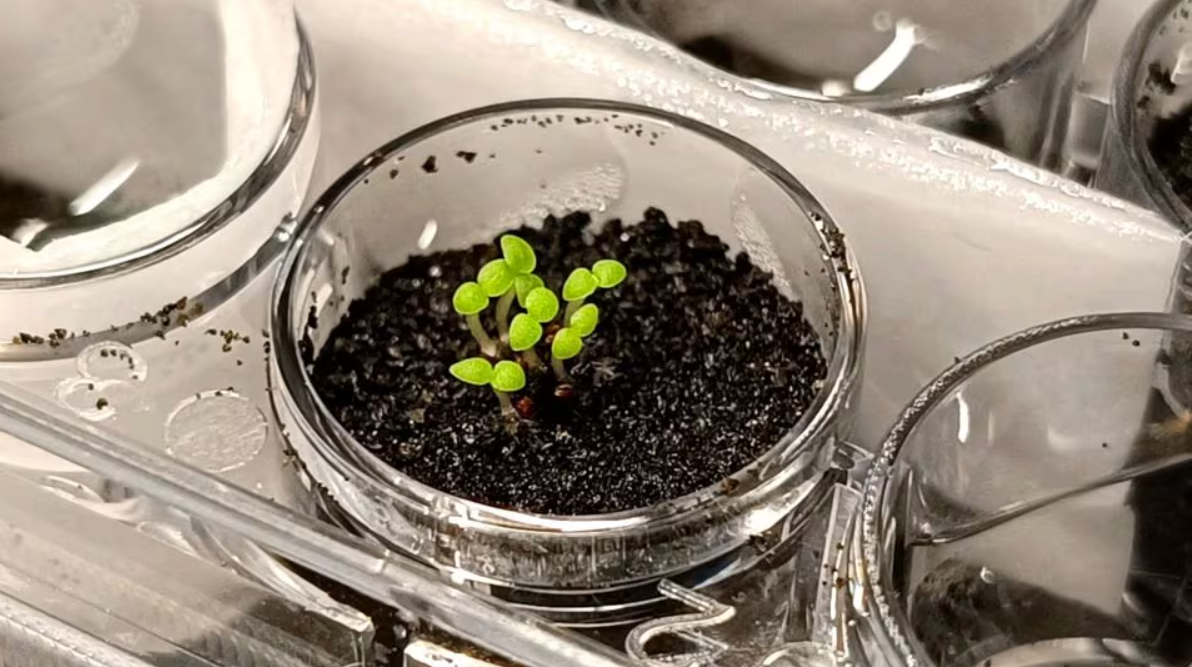
©Reuters
Pre-reading questions:
- What are your initial thoughts or assumptions about the soil on the moon?
- Do you think the soil on the moon is similar to the soil on Earth, or could there be significant differences?
Vocabulary:
- breakthrough /BREYK-throo/
- crucial /KROO-shuhl /
- conduct /kuhn-DUHKT/
- availability /uh-vey-luh-BIL-i-tee/
- agriculture /AG-ri-kuhl-cher/
[noun] – an important discovery or event that helps to improve a situation or provide an answer to a problem
The scientist’s recent breakthrough in renewable energy could revolutionize how we power our homes.
[adjective] – extremely important or necessary
Proper nutrition is crucial for the healthy development of children.
[verb] – to organize and perform a particular activity
The researchers plan to conduct a series of experiments to test the new drug’s effectiveness.
[noun] – state of being accessible, obtainable, or present
The increased availability of online resources has transformed the way we access information.
[noun] – farming
The community is working together to promote sustainable agriculture and reduce environmental impact.
Article reading:
The researchers, led by Yitong Xia from China Agricultural University, found that introducing bacteria changed lunar soil acidity, lowering the pH and allowing the dissolution of insoluble phosphate-containing minerals. This released essential phosphorus for plant growth. Xia stressed the significance, foreseeing the bacteria’s potential to transform the lunar regolith into a suitable substrate for plant cultivation, ensuring a stable food source for potential lunar settlements. In line with these breakthroughs, a Reuters report highlighted a significant advance in making lunar soil suitable for agriculture, potentially enabling prolonged human habitation on the moon by ensuring a reliable food source and establishing the foundation for sustainable agriculture to meet long-term needs.
Comprehension questions
- What is the recent breakthrough mentioned in the article, and why is it considered crucial for future moon colonization efforts?
- How did Chinese researchers enhance lunar soil fertility in their study, and what was the purpose of introducing specific bacteria?
- According to the article, what changes occurred in the treated lunar soil during lab tests, and what do these changes suggest for future lunar agriculture?
- Who is the lead author of the study, and why is Yitong Xia from China Agricultural University mentioned in the article?
- Based on the information in the article, why does the Reuters report consider the breakthrough significant, and how might it impact the possibility of prolonged human habitation on the moon?
Discussion questions
- Have you ever thought about the possibility of humans living on the moon? If yes, what aspects of lunar life intrigue you? If not, does the idea of sustainable agriculture on the moon change your perspective on the feasibility of lunar habitation?
- Have you ever followed scientific advancements that could impact our future, like breakthroughs in agriculture or space exploration? If yes, how did you come across this information, and did it influence your views on scientific progress? If not, would you be interested in staying informed about such breakthroughs, and how do you think they might affect our lives?
- Based on the article, do you think the breakthrough in making lunar soil suitable for agriculture is a positive development for potential lunar settlements?
- How might the ability to cultivate plants on the moon impact the feasibility of establishing and sustaining human colonies? Consider the potential benefits and challenges discussed in the article.
- The study mentioned in the article was conducted by Chinese researchers. How important do you think international collaboration is in scientific endeavors, especially when it comes to space exploration and potential colonization? What are the advantages and potential drawbacks of such collaborations?